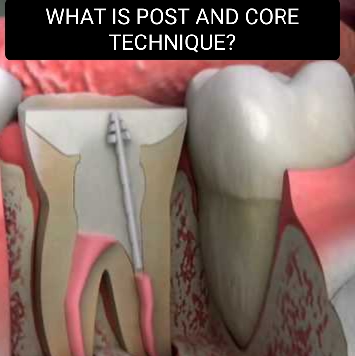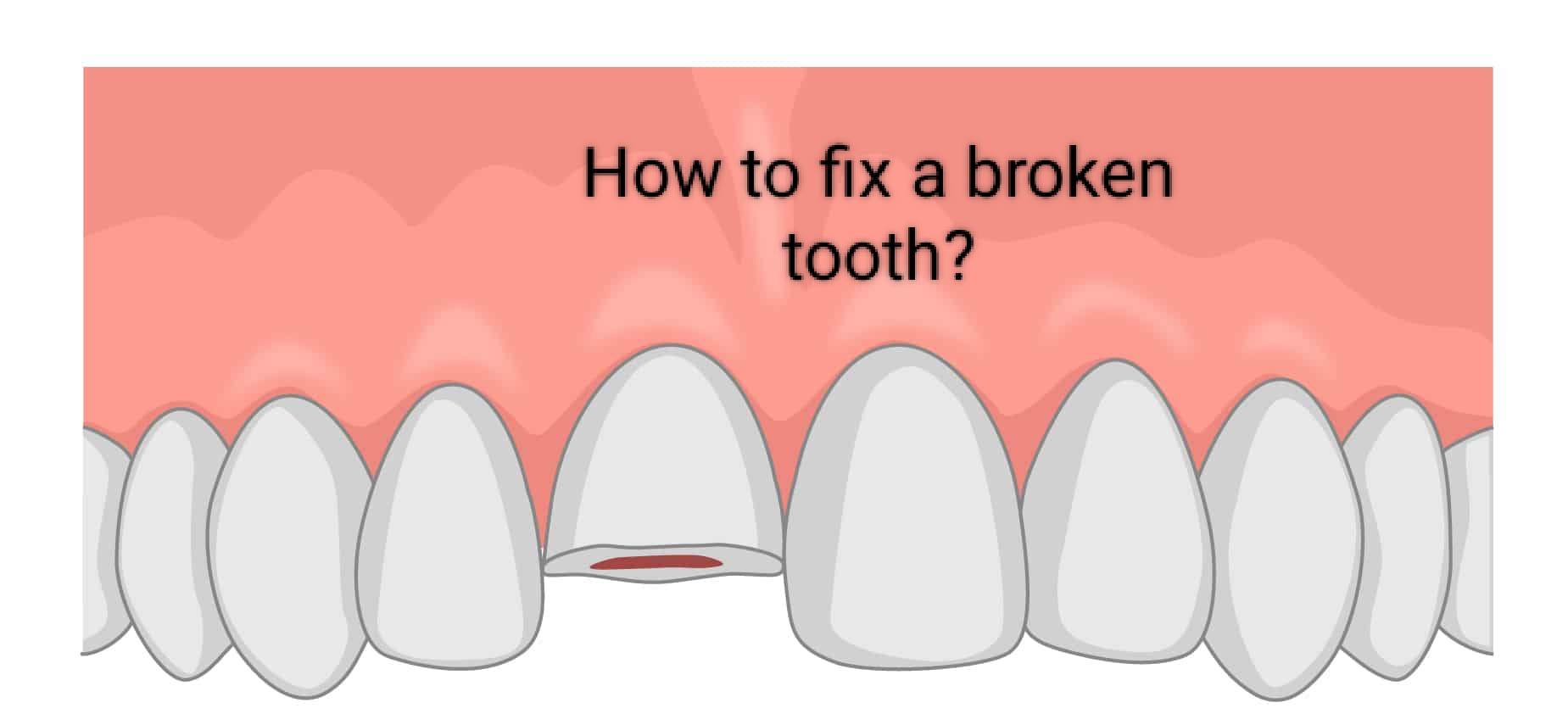Post and core in dental treatment refers to a procedure used to restore a tooth that has undergone significant decay or damage, typically after root canal therapy.
RELATED ARTICLE: WHAT IS ROOT CANAL TREATMENT?
A post is a metal or fiber-reinforced rod that is inserted into the root canal of the tooth after the removal of the infected or damaged pulp. The post provides support and stability for the final restoration.
The core refers to the material used to build up the tooth structure around the post. It can be made of various materials such as composite resin or dental amalgam. The core rebuilds the tooth’s foundation and provides a solid base for the final crown or restoration.
THE PURPOSE OF POST AND CORE TECHNIQUE
The post and core procedure allows a tooth to be restored and strengthened, enabling a crown or bridge to be securely placed on top to restore its form, function, and aesthetics. This treatment option is often recommended when a tooth has extensive damage that cannot be adequately restored with a simple filling.
The purpose of the post and core technique is to restore and strengthen a tooth that has been weakened or damaged due to decay, fracture, or extensive dental work. It allows for the proper foundation and support needed to place a crown or bridge on the tooth.
The technique is particularly useful in cases where a tooth has undergone root canal therapy, as the removal of the infected pulp can significantly weaken the tooth structure. By inserting a post into the root canal and building up the core around it, the tooth is reinforced and made capable of withstanding the forces of chewing and biting.
Additionally, the post and core technique helps to provide stability and retention for the final restoration. The post acts as an anchor, while the core provides a solid base for the placement of a crown or bridge. This ensures that the final restoration is securely attached to the tooth.
Overall, the purpose of the post and core technique is to restore the tooth to its original strength, function, and appearance, allowing for successful long-term restoration and preservation of the natural tooth structure.
RELATED ARTICLE: WHAT IS ROOT CANAL TREATMENT?
INDICATIONS
The post and core technique is indicated in the following situations:
1. Extensive Dental Decay: When dental decay has significantly weakened the tooth structure and there is insufficient healthy tooth structure remaining to support a crown or bridge.
2. Fractured or Broken Teeth: In cases where a tooth has fractured or broken, the post and core technique can help provide stability and support for the final restoration.
3. Endodontically Treated Teeth: After root canal therapy, a tooth may become weakened due to the removal of the infected pulp. A post and core can reinforce the tooth structure and provide a solid foundation for a crown or bridge.
4. Large Fillings: Teeth with large fillings may require additional support and strength to prevent further damage or fracture. The post and core technique can help restore the tooth structure and provide a stable base for a crown or bridge.
5. Aesthetic Reasons: In some cases, the post and core technique may be used to improve the appearance of a tooth that is discolored, misshapen, or has an abnormal contour.
CONTRAINDICATIONS
There are several contraindications to consider when deciding to use the post and core technique. These include:
1. Insufficient Tooth Structure: If the tooth has extensive damage or decay that cannot support a post and core restoration, alternative treatment options may be considered.
2. Severe Periodontal Disease: Advanced gum disease can compromise the stability and support of the tooth, making it unsuitable for a post and core restoration.
3. Vertical Root Fractures: If a tooth has a vertical root fracture that extends into the root canal space, the tooth may not be a good candidate for post and core treatment, as it may not provide long-term stability.
4. Tooth Mobility: Teeth that exhibit excessive mobility or are not solidly anchored in the bone may not be suitable for post and core treatment.
5. Inadequate Oral Hygiene: If a patient has poor oral hygiene habits and is unable or unwilling to maintain proper oral hygiene, the success of a post and core restoration may be compromised.
6. Financial Considerations: Post and core restorations can be more expensive compared to other treatment options, so financial constraints may also be a contraindication for some patients.
Ultimately, the decision to proceed with a post and core treatment is based on a careful evaluation of the individual patient’s oral health and circumstances.
MATERIALS USED IN POST AND CORE TECHNIQUE
The materials used in post and core restorations can vary, and the choice depends on factors such as the dentist’s preference, the clinical situation, and the patient’s needs. Here are some commonly used materials:

1. Metal Posts: Metal posts are typically made of materials like gold alloy, stainless steel, or titanium. They provide strength and stability to the restoration but may have limited aesthetic appeal.
2. Fiber Posts: Fiber posts are made of composite materials and offer a more aesthetic option compared to metal posts. They are light, flexible, and can be color-matched to the natural tooth.

3. Ceramic Posts: Ceramic posts are made from materials like zirconia or alumina. They provide good aesthetics and biocompatibility. Ceramic posts are often used when an all-ceramic crown or restoration is preferred.
4. Core Materials: The core of the restoration, which fills the tooth structure around the post, can be made of various materials. Some options include dental composites, glass ionomer cements, or hybrid materials. The choice depends on factors like the amount of remaining tooth structure, esthetic requirements, and functional demands.
It is important to note that the selection of materials should be made based on the specific clinical situation and the expertise of the dentist, who will consider factors like the tooth’s condition, occlusal forces, esthetic requirements, and patient preferences.

STEP-BY-STEP PROCEDURE
The post and core procedure is typically performed after a tooth has undergone root canal treatment and requires additional support to restore its shape, strength, and function. Here is a general step-by-step explanation of the procedure:
1. Evaluation and Preparation: The dentist will examine the tooth and assess its condition to determine if a post and core restoration is necessary. X-rays may be taken to evaluate the root structure and surrounding bone. Once it has been determined that a post and core is needed, the tooth is prepared by removing any remaining decay or compromised dental restorations.
2. Post Placement: A post is a thin, rod-like structure that provides stability for the dental restoration. The dentist will create space within the root canal by removing a small amount of gutta-percha (a filling material used in root canals) to accommodate the post. The post is then inserted into the root canal and secured with a dental adhesive or cement. The type of post used (metal, fiber, or ceramic) depends on the specific needs of the patient.

3. Core Build-up: The core build-up refers to the restoration material used to replace the missing tooth structure and provide a foundation for the final restoration. The dentist may use a dental composite, glass ionomer cement, or another suitable material to build up the core around the post. This process is done with the goal of achieving optimal shape and contour for the final crown or restoration.
4. Crown Preparation: After the core build-up, the tooth may undergo further preparation to receive a crown. This involves reshaping the tooth to create space for the crown and removing any remaining decay or old restorations. The tooth is then typically scanned or impressions are taken to create a custom-made crown in a dental laboratory.
5. Temporary Restoration: While the final crown is being fabricated, a temporary restoration is placed to protect the tooth and maintain its functionality and aesthetics.
6. Final Crown Placement: Once the final crown is ready, the temporary restoration is removed, and the permanent crown is cemented or bonded onto the tooth. The dentist will ensure proper fit, occlusion (bite alignment), and aesthetics for a natural-looking and functional result.
It’s important to note that this is a general outline of the post and core procedure, and the specific steps may vary depending on the individual case and dentist’s approach. It is always best to consult with a qualified dentist for a personalized treatment plan and procedure explanation.
ADVANTAGES
The post and core procedure offers several benefits for patients who have undergone root canal treatment or have a severely damaged or weakened tooth. Some of the key benefits include:
1. Restoring Tooth Structure: The post and core procedure helps restore the structure and integrity of a tooth that has been significantly weakened or damaged. The post provides stability and support, while the core build-up replaces missing tooth structure, allowing for the placement of a crown or restoration.
2. Enhancing Retention: By placing a post inside the root canal and utilizing dental adhesive or cement, the post and core restoration provides additional retention for the final crown or restoration. This helps ensure that the crown remains securely in place when biting and chewing.
3. Improving Strength and Durability: The post and core restoration reinforces the weakened tooth, making it stronger and more resistant to fracture. It helps distribute chewing forces more evenly, reducing the chances of further damage or stress on the remaining natural tooth structure.
4. Restoring Function and Aesthetics: The procedure helps restore the natural functioning and appearance of the tooth. The crown placed on top of the post and core mimics the shape, size, and color of a natural tooth, allowing for proper biting, chewing, and speaking. This also helps improve overall aesthetics and smile confidence.
5. Long-Term Solution: When properly performed and maintained, the post and core restoration can have long-term durability and success. With good oral hygiene practices and regular dental check-ups, the restored tooth can last for many years, providing functional and aesthetic benefits.
It’s worth noting that the success of a post and core restoration depends on several factors, including the quality of the treatment, the amount of remaining healthy tooth structure, the patient’s oral hygiene habits, and any additional dental issues or conditions.
DISADVANTAGES
While the post and core procedure offers several benefits, there are also some potential disadvantages or drawbacks to consider:
1. Invasive Procedure: The post and core procedure typically requires the removal of additional tooth structure to accommodate the placement of the post. This means that more healthy tooth material may need to be sacrificed, which can weaken the tooth further and potentially increase the risk of future complications.
2. Risk of Tooth Fracture: Although the post and core restoration is designed to strengthen the weakened tooth, there is still a possibility of tooth fracture, especially if the remaining natural tooth structure is severely compromised. This risk is higher in individuals who have significant tooth decay, large fillings, or a history of trauma.
3. Adjunct to Other Treatments: Post and core restorations are usually combined with other dental procedures, such as root canal therapy and crown placement. This means that there may be additional costs, time, and appointments involved to complete the entire treatment process.
4. Potential for Post Dislodgement: In some cases, the post used in the procedure may loosen or become dislodged over time, especially if there is inadequate root canal filling or insufficient bonding of the post to the tooth structure. This can compromise the integrity of the restoration and may require additional treatment or replacement.
5. Maintenance Requirements: Like any dental restoration, post and core restorations require regular maintenance and care. Patients need to practice good oral hygiene, including regular brushing, flossing, and the use of antimicrobial mouthwash, to prevent infection and prolong the lifespan of the restoration. Regular dental check-ups are also necessary to monitor the health and stability of the restored tooth.
It is essential to discuss these potential disadvantages with a dentist and thoroughly evaluate the risks and benefits of a post and core restoration before proceeding with the procedure. Every case is unique, and a dentist can provide individualized recommendations based on the patient’s specific dental condition and needs.
COST OF POST AND CORE PROCEDURE
The cost of a post and core procedure can vary depending on factors such as the location of the dental office, the dentist’s experience, the complexity of the case, and any additional treatments required.
On average, the cost of a post and core restoration can range from $500 to $1500 per tooth. It’s also important to note that this cost may not include the cost of the dental crown or any other subsequent restorative treatments that may be needed. Dental insurance may cover a portion of the cost, so it’s recommended to check with your insurance provider to determine the coverage and potential out-of-pocket expenses.
CONCLUSION
The post and core procedure can provide several benefits, such as restoring the strength and functionality of a tooth, stabilizing a dental restoration, and preventing future fractures or damage. However, it is important to consider the potential drawbacks, including the invasive nature of the procedure, the risk of tooth fracture, the need for additional treatments, the possibility of post dislodgement, and the maintenance requirements. It is crucial to have a thorough discussion with a dentist to understand the individual risks and benefits and make an informed decision about undergoing a post and core restoration.
RELATED ARTICLE: WHAT IS ROOT CANAL TREATMENT?
FREQUENTLY ASKED QUESTIONS
Q: What is a post and core procedure?
A: A post and core procedure is a dental treatment that is done when a tooth has been significantly damaged, such as through decay or fracture, and requires both a post and a core restoration to provide structural support.
Q: What is the purpose of a post and core procedure?
A: The purpose of a post and core procedure is to strengthen a tooth that has lost a significant amount of its structure, allowing for the placement of a dental crown or other restoration.
Q: How is a post and core procedure done?
A: The procedure typically involves removing any decay or damaged material from the tooth, creating space for a post to be inserted into the root canal, filling the space with a core material, and shaping it to support the final restoration.
Q: How long does a post and core procedure take?
A: The length of the procedure can vary depending on factors such as the complexity of the case and the dentist’s techniques. Generally, it can take one to two appointments of about one to two hours each.
Q: Does a post and core procedure hurt?
A: The procedure is typically done under local anesthesia, so you shouldn’t feel any pain during the treatment. However, you might experience some sensitivity or mild discomfort afterward, which can be managed with over-the-counter pain medications.
Q: How long does a post and core restoration last?
A: With proper care and maintenance, a post and core restoration can last for many years, but it may eventually require replacement due to normal wear and tear.
Q: Is a post and core procedure covered by dental insurance?
A: Dental insurance may cover a portion of the cost of a post and core procedure, but coverage can vary. It’s best to check with your insurance provider to determine the extent of coverage and any out-of-pocket expenses.




